Dermochelys coriacea
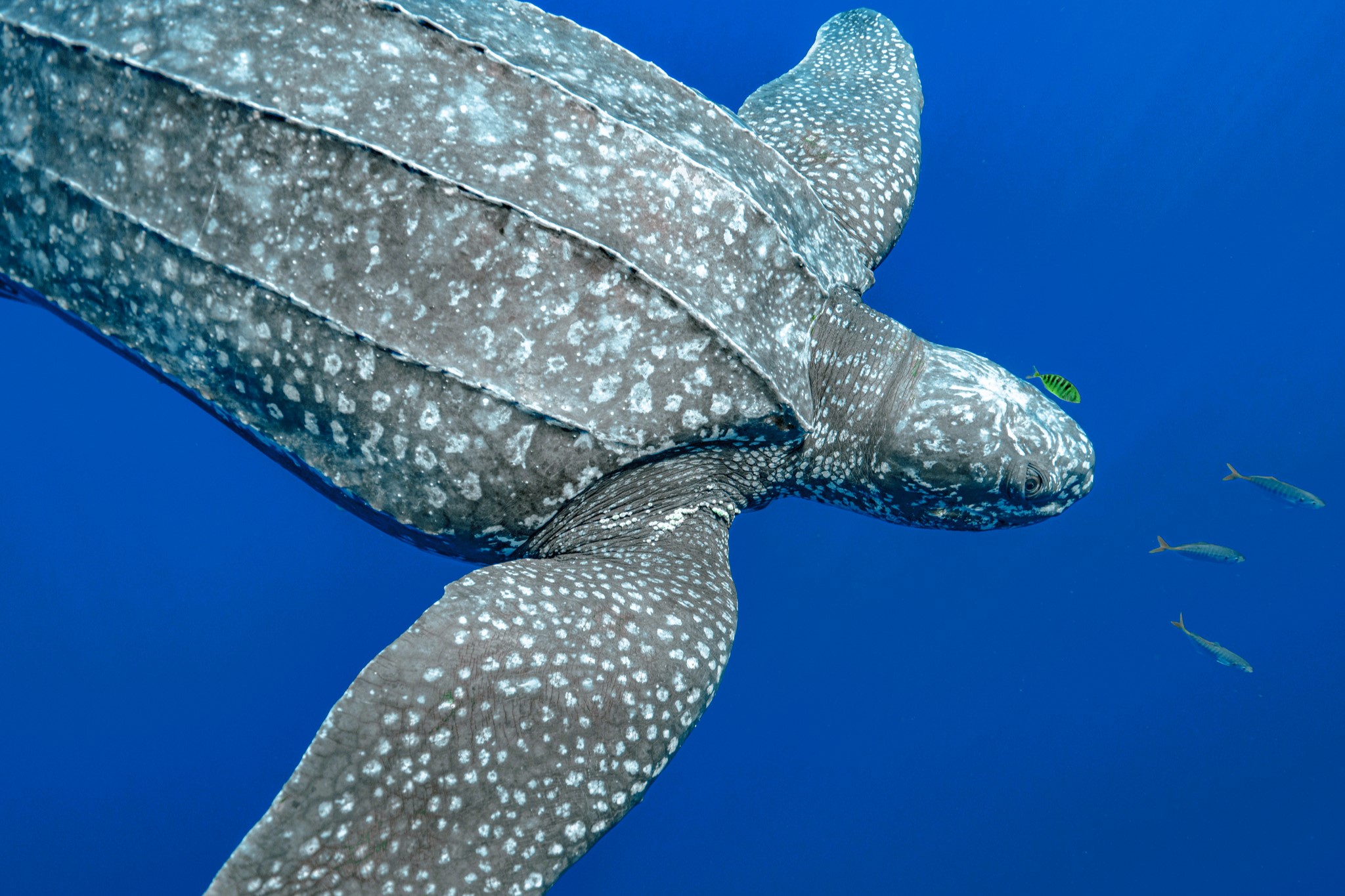

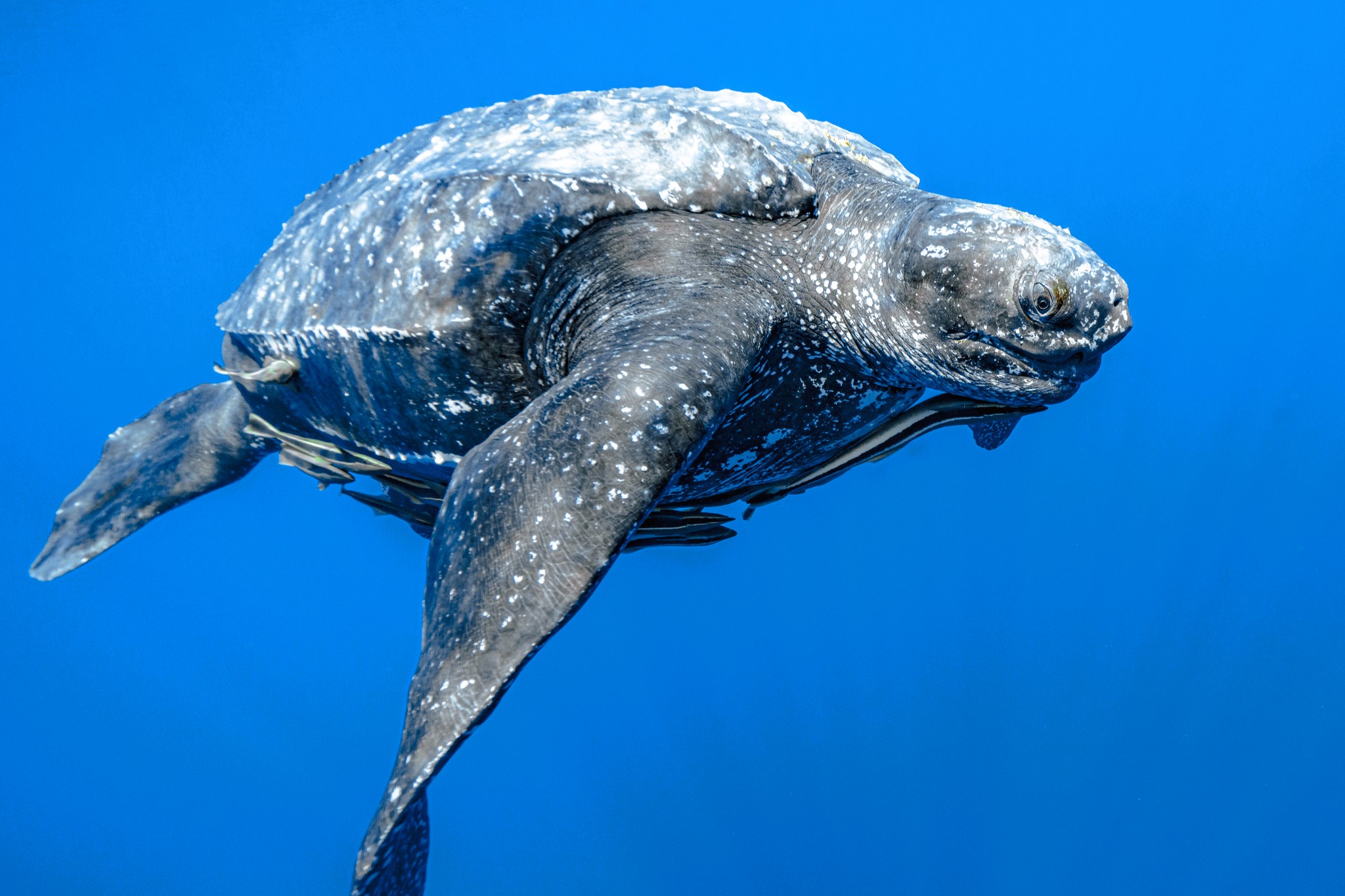
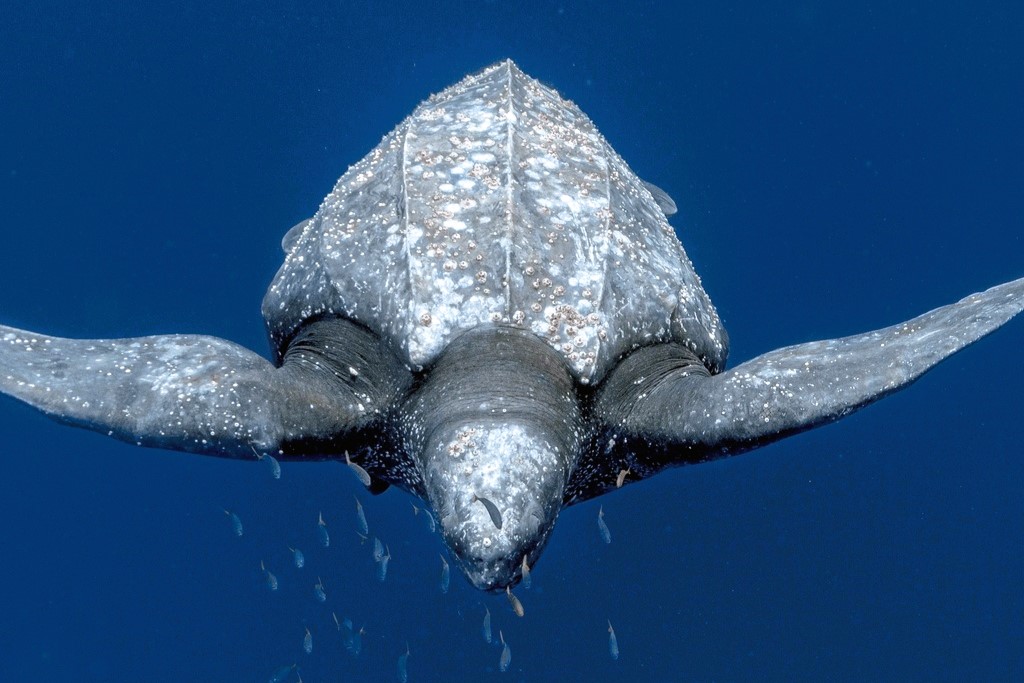
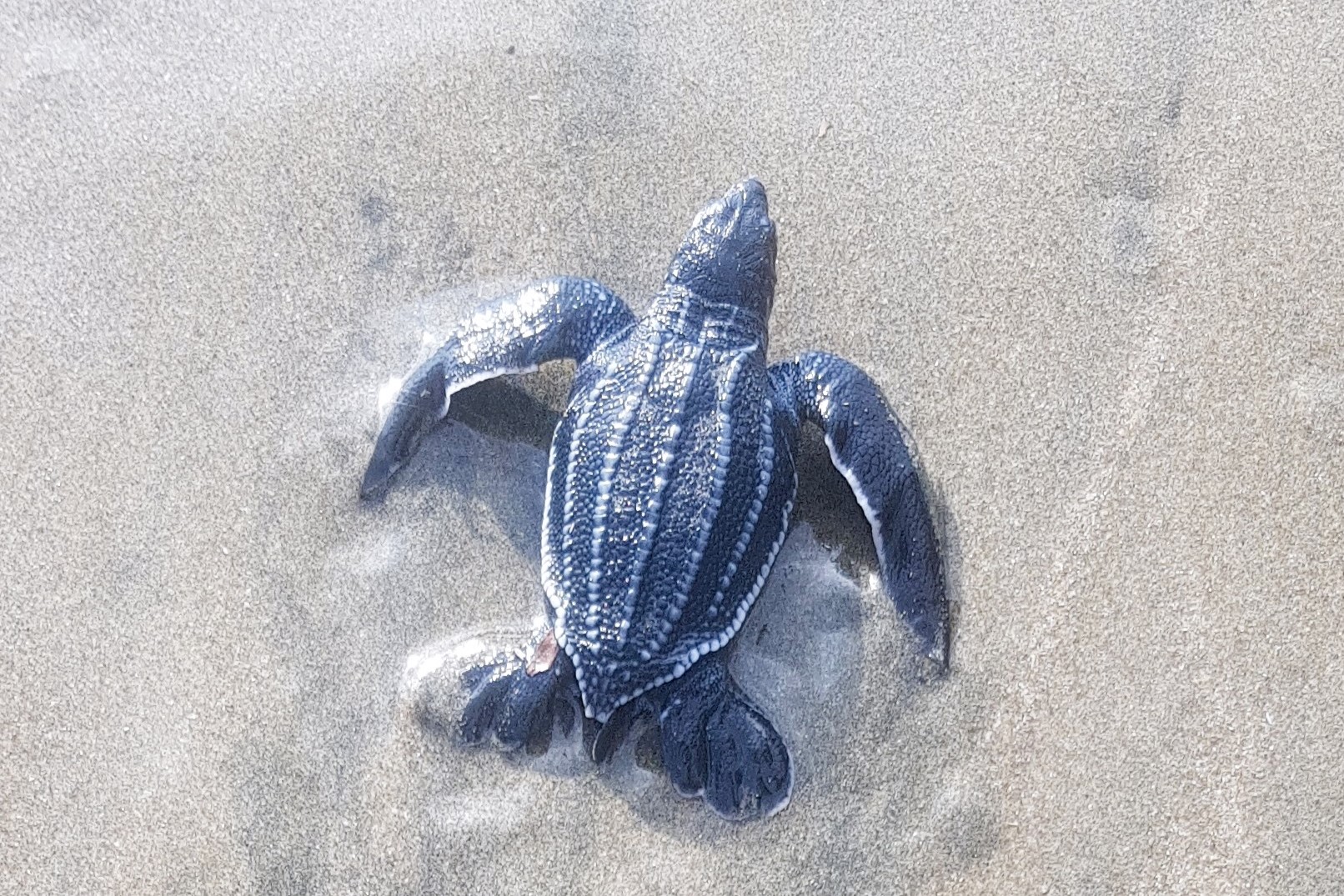

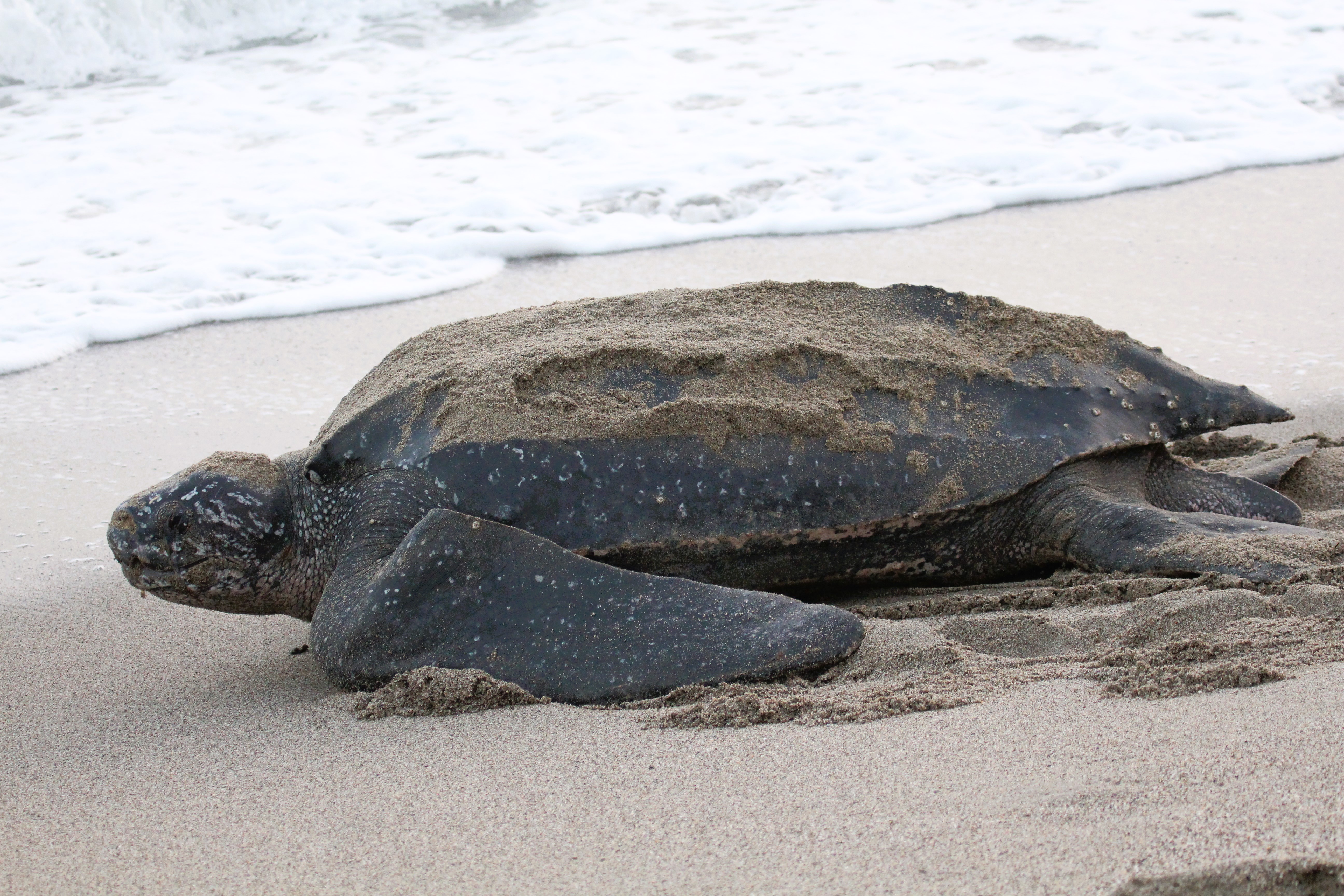
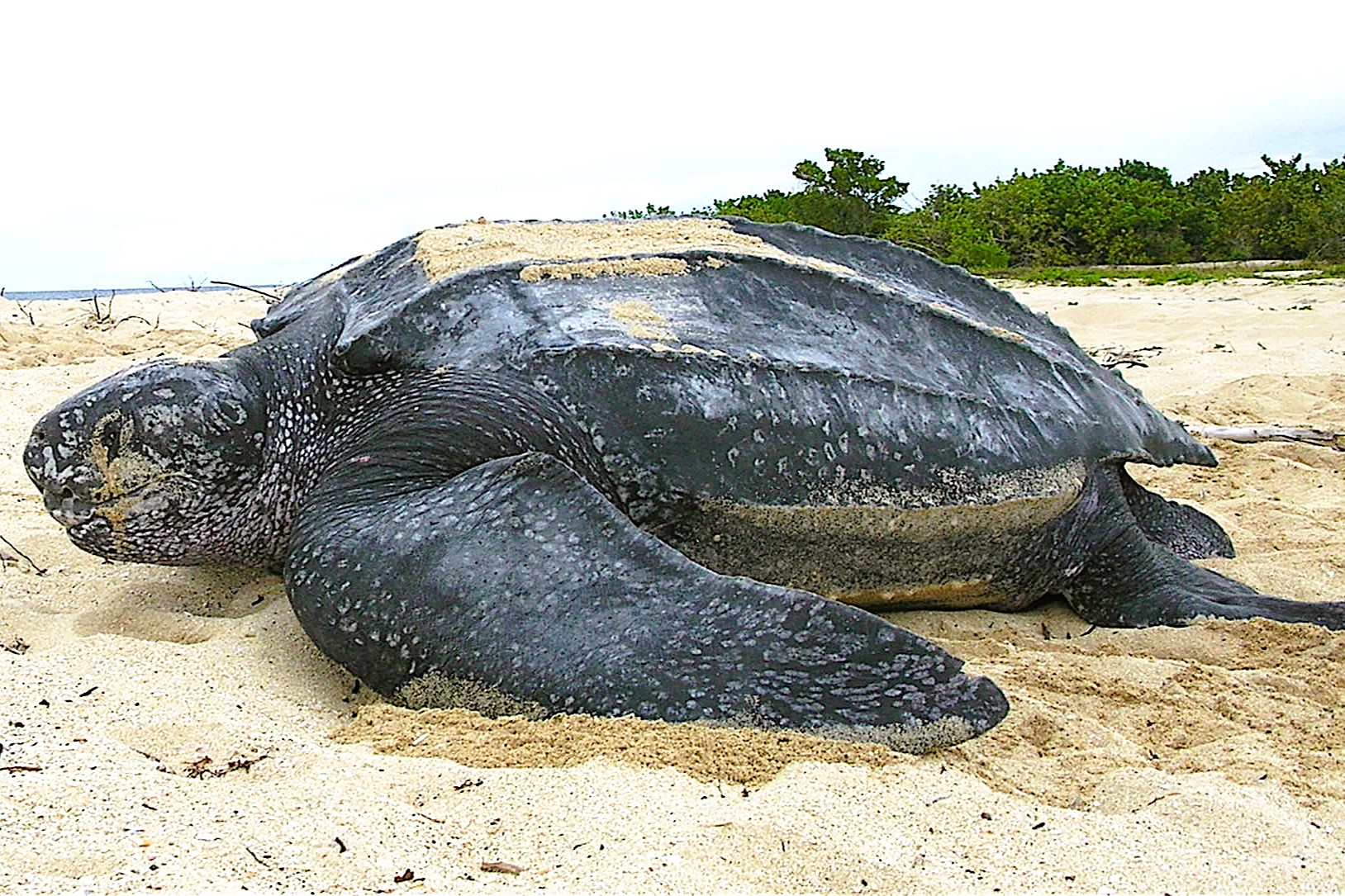


Reptilia → Testudines → Cryptodira → Dermochelyidae → Dermochelys coriacea
Tartüga de cöio
The leatherback turtle is the largest living marine reptile and is distinguished by its unique morphology. The carapace, up to 6.6–8.2 ft (2–2.5 m) long, lacks the typical horny scutes and instead is composed of small bones embedded in a thick layer of leathery skin, typically dark bluish-black, crossed by evident light longitudinal stripes.
Adults can reach exceptional weights: between 660 and 2000 lbs (300–900 kg), with exceptional individuals exceeding 2200 lbs (1,000 kg). Sexual dimorphism is most evident in body size (females are generally larger) and in the tail, which in males is longer and more robust. Another distinguishing feature is a more pronounced pink spot on the heads of adult males during the breeding season.
Hatchlings, about 2.4–2.8 in (6–7 cm) long, are black with characteristic white dots along the dorsal ridges.
This species stands out for its impressive appearance and remarkable adaptability to long oceanic migrations.
In the Ligurian Sea, the leatherback turtle is considered an occasional but regular presence, with sightings most often recorded from June to November. In western Liguria, this species is found mainly in pelagic waters, much more rarely near the coast, and reports are more frequent between Capo Mele and Ventimiglia. Here, the particular current dynamics favor the concentration of its preferred prey, especially large jellyfish. All individuals observed in the Ligurian basin come from the Atlantic Ocean, entering through the Strait of Gibraltar.
Dermochelys coriacea prefers deep pelagic environments and often moves to convergence zones of currents where large quantities of jellyfish accumulate. In the Ligurian Sea, it is most active in areas with high densities of gelatinous organisms, while its presence near the coast is only occasional, unlike other species of marine turtles.
A highly pelagic species, the leatherback turtle is capable of extraordinary dives, reaching depths of up to 3,280 ft (1,000 m). Its presence in the western Mediterranean is mainly between June and November, a period during which it follows large masses of migratory jellyfish.
It does not nest in the Mediterranean: individuals feeding in our waters come from the Atlantic, using the Strait of Gibraltar for their migrations. Dermochelys coriacea is also one of the very few reptile species able to maintain a body temperature higher than that of the surrounding environment, thanks to complex physiological and behavioral adaptations.
This species has a highly specialized diet, feeding almost exclusively on planktonic gelatinous organisms. Specifically:
In western Liguria, where jellyfish densities can become very high, the leatherback turtle plays a fundamental role as a predator for the balance of the pelagic ecosystem.
In the Ligurian Sea, the leatherback turtle is severely threatened by multiple anthropogenic factors:
These threats, aggravated by ongoing climate change, make the work of monitoring networks and recovery centers essential, especially in western Liguria.
Dermochelys coriacea is the only living species of the family Dermochelyidae and presents unique physiological adaptations: